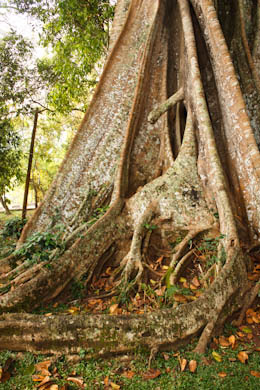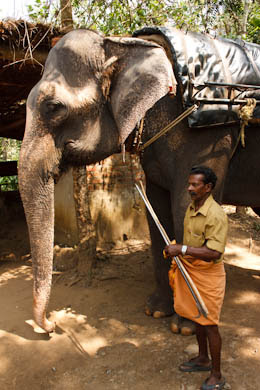The following morning after breakfast, we took a walk around the hotel within the reserve. Trees in the area were massive, towering high into the bright sky. Some trees seemed to flow like ribbons, their sculpted moss and lichen-dotted roots disappearing at the ground. Standing at the base within these bands made a person feel like an insignificant dwarf. Rhesus monkeys poked their heads from around the trunk, while a baby monkey clung to its mother. Seemingly unfazed by the presence of people, several wild hogs and a baby strolled past. Signs in multiple languages warned people not to feed the animals.
Just outside the reserve, we did a touristy thing and rode an elephant, which easily carried all four of us. The mahout led the elephant through the forest, past brilliant flowers, ferns, and jackfruit trees. Our petite mahout had the elephant pause occasionally so he could take photos with my mother’s camera, sometimes commanding the elephant to pose and curve its trunk.
Just outside the reserve, we did a touristy thing and rode an elephant, which easily carried all four of us. The mahout led the elephant through the forest, past brilliant flowers, ferns, and jackfruit trees. Our petite mahout had the elephant pause occasionally so he could take photos with my mother’s camera, sometimes commanding the elephant to pose and curve its trunk.










